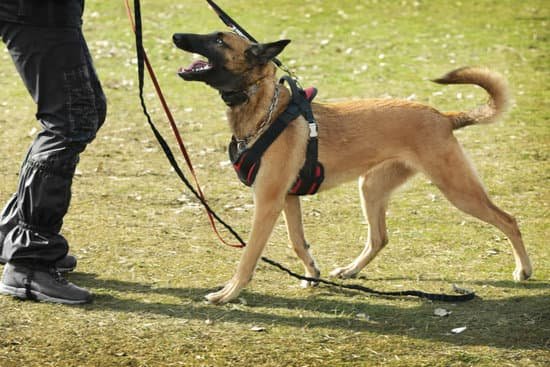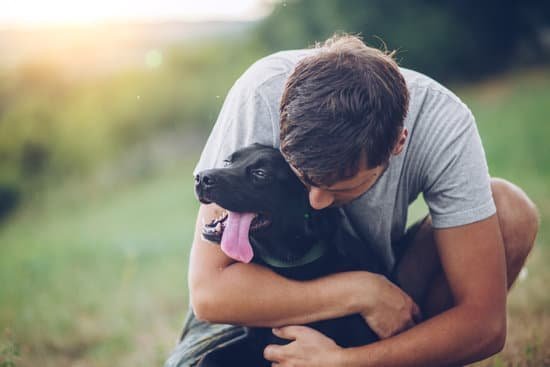Training one dog can be a rewarding experience, but when you have multiple dogs in your household, the dynamics of training can become more complex. From establishing a structured routine to managing distractions and handling conflicts between dogs, there are various factors to consider when training multiple dogs effectively. In this article, we will explore how to train dogs when you have multiple furry companions sharing your home.
One of the key aspects of successfully training multiple dogs is setting up a structured training routine that accommodates the needs and personalities of each individual dog. By establishing clear guidelines and consistency in your approach, you can create a harmonious environment for training sessions. It is important to recognize that each dog may require different training methods or techniques based on their temperament and learning style.
Furthermore, establishing a hierarchy among the dogs in your household can help create a sense of order and minimize conflicts during training sessions. Understanding each dog’s role within the pack can assist in maintaining peace and cooperation among them. By implementing strategies to promote positive interactions and mutual respect between the dogs, you can foster a conducive environment for effective training sessions.
Setting Up a Structured Training Routine for Multiple Dogs
When it comes to training multiple dogs, having a structured routine is essential for success. One of the key factors in training multiple dogs is consistency. Establishing a daily training schedule that includes specific time slots for each dog can help create a sense of routine and expectation for both you and your furry companions.
It’s important to create individualized training plans for each dog based on their unique personalities, strengths, and weaknesses. While some dogs may excel in basic obedience commands, others may struggle with certain behaviors. Tailoring your training approach to meet the needs of each dog will lead to more effective and successful outcomes.
Another crucial aspect of setting up a structured training routine for multiple dogs is managing your time effectively. You want to make sure that each dog receives adequate attention and training without feeling overwhelmed or neglected. By dividing your time strategically and being mindful of each dog’s progress, you can ensure that all your pups are making steady improvements in their obedience and behavior.
| Structured Routine Benefits | Effective Training Strategies |
|---|---|
| Consistency | Individualized Training |
| Routine Schedule | Time Management |
Establishing a Hierarchy Among the Dogs
Training multiple dogs can be a rewarding yet challenging experience, especially when it comes to establishing a hierarchy among them. A clear hierarchy helps prevent conflicts and ensures smoother training sessions. Here are some tips on how to establish a hierarchy among your dogs:
- Leadership role: Designate yourself as the leader of the pack. Dogs thrive in a structured environment with clear leadership. Establish rules and boundaries that all dogs must follow.
- Social order: Observe your dogs’ interactions with each other to determine their natural social order. Respect this order but also gently guide it if needed to prevent power struggles.
- Feeding hierarchy: During meal times, ensure that the dominant dog eats first. This reinforces the hierarchy and prevents food-related conflicts.
In addition to setting up a clear hierarchy, individualized training sessions for each dog are essential. Each dog has its own personality, learning style, and strengths and weaknesses. Tailoring training sessions to meet the needs of each dog will ensure effective results.
- Assess each dog: Understand each dog’s temperament, energy level, and motivations before designing a training plan for them.
- One-on-one time: Dedicate individual training sessions for each dog to focus on their specific training goals and challenges.
- Reward based on individual progress: Celebrate each dog’s achievements during training sessions with personalized rewards that motivate them.
By establishing a clear hierarchy among your dogs and offering individualized training sessions, you can create a harmonious environment where each dog knows its place and receives targeted guidance for their development. Remember that patience, consistency, and positive reinforcement are key components in successful training when dealing with multiple dogs simultaneously.
Individualized Training Sessions for Each Dog
Training multiple dogs can be a rewarding yet challenging experience. Each dog has its own unique personality, learning style, and strengths and weaknesses. To ensure effective training for each of your furry companions, it is crucial to provide individualized training sessions tailored to their specific needs. Here are some tips on how to conduct individualized training sessions for each dog:
- Assess each dog’s behavior and skills: Before starting individualized training sessions, take the time to assess each dog’s behavior, obedience level, and any specific areas that need improvement. This will help you create a customized training plan for each dog.
- Set goals for each dog: Clearly define your training goals for each dog based on their abilities and personalities. Whether it’s teaching basic commands, addressing behavioral issues, or advancing their skills, having specific goals will guide your training sessions.
- Create separate training schedules: Devote separate time slots for each dog’s training session to avoid confusion and ensure focused attention. Consistency is key in dog training, so establish a routine that works for both you and your dogs.
Individualized training sessions also allow you to bond with each of your dogs individually, strengthening your relationship with them while helping them reach their full potential. By recognizing the unique needs of each dog and tailoring your approach accordingly, you can effectively train multiple dogs simultaneously while promoting harmony within your furry pack.
Managing Distractions During Training With Multiple Dogs
When training multiple dogs, managing distractions is key to ensuring that each dog can focus and learn effectively. With more than one dog in the training session, it’s common for them to become distracted by each other, their surroundings, or even competing for attention from the trainer. Here are some strategies on how to train dogs when you have multiple dogs and need to handle distractions:
Firstly, it’s important to create a dedicated training space that minimizes external distractions. Choose an area that is quiet, free from other animals or people, and where your dogs feel comfortable and focused. This will help reduce the chances of them getting easily distracted during training sessions.
Secondly, consider using management tools such as leashes or crates to help control each dog’s movements and prevent them from wandering off or interfering with each other’s training. By keeping them physically separated when necessary, you can ensure that they maintain their attention on the tasks at hand.
Lastly, work on gradually increasing distractions in a controlled manner during training. Start with minimal distractions and as your dogs get more comfortable and proficient with their training, add elements like toys, noises, or other people into the mix. This will help them learn to focus amidst various stimuli and improve their overall obedience and listening skills.
| Strategy | Benefits |
|---|---|
| Create a dedicated training space | Minimizes external distractions |
| Use management tools like leashes | Controls dog movements during training |
| Increase distractions gradually | Improves focus amidst various stimuli |
By implementing these strategies for managing distractions during training with multiple dogs, you can create a more productive and successful learning environment for all your furry companions. Remember that consistency is key when it comes to training, so be patient and persistent in your efforts to help each dog reach their full potential. With time and practice, you’ll see improvements in their behavior and obedience that will make the process rewarding for both you and your canine companions.
Socializing Multiple Dogs for Better Training Outcomes
Benefits of Socialization
Socializing multiple dogs is an essential aspect of training, as it helps them learn how to interact with each other and with other animals or humans. By exposing your dogs to various social situations, they can develop better communication skills, self-control, and confidence. Additionally, socialization can reduce anxiety and aggression in dogs, leading to smoother training sessions and improved behavior.
Group Walks and Playtime
One effective way to socialize multiple dogs is by organizing group walks or playtime sessions. This allows the dogs to interact in a controlled environment and practice their social skills. During these activities, observe how each dog interacts with the others and intervene if necessary to prevent any negative behaviors from escalating. Encourage positive interactions and reward good behavior to reinforce appropriate social conduct.
Training Sessions With Multiple Dogs
Incorporating socialization into your training sessions can also enhance the outcomes when working with multiple dogs. Start by training the dogs individually on basic commands before gradually introducing group training exercises. Practice commands like sit, stay, or heel with all the dogs together while maintaining order and rewarding each dog for following instructions. This will not only improve their obedience but also foster a sense of camaraderie among the pack.
Handling Conflicts and Competition Between Dogs During Training
Recognizing Signs of Conflict
When training multiple dogs, conflicts and competition between them can arise. It is crucial for pet owners to be able to recognize the signs of tension or aggression between their dogs. Watch out for body language such as raised fur, growling, snapping, or other aggressive behaviors. By identifying these signs early on, you can prevent escalation and address the issue effectively.
Implementing Separate Training Areas
To minimize conflicts during training sessions, consider setting up separate training areas for each dog. This will help reduce distractions and prevent any territorial issues that may arise when multiple dogs are in close proximity to each other. By providing individualized attention and space for training, you can focus on each dog’s needs without the added stress of competition.
Addressing Competition Through Positive Reinforcement
Competition between dogs during training can be turned into a positive experience through the use of reinforcement techniques. Instead of pitting one dog against another, create a cooperative environment where both dogs are rewarded for good behavior. This will help build a sense of teamwork and cooperation among your furry companions. Remember to praise and treat each dog separately to avoid any feelings of jealousy or resentment towards one another.
Utilizing Positive Reinforcement Techniques for Training Multiple Dogs
Training multiple dogs can be a challenging task, but utilizing positive reinforcement techniques can make the process much smoother and more effective. Positive reinforcement involves rewarding good behavior, which encourages the dogs to repeat those behaviors in the future. When training multiple dogs, it is important to use positive reinforcement consistently and effectively to ensure that each dog understands what is expected of them.
One way to utilize positive reinforcement when training multiple dogs is to use individualized rewards for each dog. Each dog may have different preferences when it comes to treats or toys, so it’s important to tailor the rewards to each dog’s preferences. This not only increases motivation for the dogs but also helps prevent any conflicts over resources during training sessions.
In addition to individualized rewards, timing is crucial when using positive reinforcement with multiple dogs. It’s important to reward the desired behavior immediately after it occurs, so that the dogs can make a clear connection between their actions and the reward they receive.
Consistency in timing and rewards will help reinforce good behaviors and promote faster learning for all of the dogs involved. By implementing these positive reinforcement techniques, you can create a positive and motivating training environment for your multiple dogs.
Tips for Consistency and Patience in Training Multiple Dogs
Training multiple dogs can be a rewarding but challenging experience. Consistency and patience are key factors in successfully training each dog and maintaining harmony within the group. One important tip for consistency is to establish a routine that includes regular training sessions for each dog. This helps them understand what is expected of them and allows you to address any behavior issues consistently.
In addition to setting up a structured routine, it is crucial to remain patient throughout the training process. Each dog has its own unique personality and learning pace, so it’s important not to compare their progress. Patience is especially important when dealing with setbacks or slower progress from certain dogs. Remember that consistency and patience go hand in hand when working with multiple dogs, and staying calm and positive will ultimately lead to better results.
Another tip for maintaining consistency and patience when training multiple dogs is to stay organized and keep track of each dog’s progress. This may involve using separate training logs or journals for each dog, so you can monitor their individual achievements and areas for improvement.
By staying organized, you can ensure that each dog receives the appropriate level of training and attention they need to succeed. Remember, every dog is different, so adjust your training approach as needed for each individual canine companion.
Conclusion
Training multiple dogs can be a rewarding but challenging endeavor. By understanding the dynamics of training multiple dogs and setting up a structured routine, pet owners can effectively work towards establishing a harmonious relationship with their furry friends. It is essential to remember that each dog is unique and may require individualized training sessions to cater to their specific needs and abilities.
Establishing a hierarchy among the dogs is crucial in maintaining order during training sessions. By managing distractions and socializing the dogs regularly, pet owners can create an environment conducive to learning and positive behavior. Handling conflicts and competition between dogs with patience and consistency will contribute to a peaceful coexistence among the pack.
Utilizing positive reinforcement techniques such as treats, praise, and playtime can make training sessions fun and engaging for both dogs and owners. Celebrate progress, no matter how small, and always remember to be patient with your furry companions. With dedication, consistency, and love, pet owners can achieve success in training multiple dogs and build a strong bond with their beloved pets.
Frequently Asked Questions
How Do You Train Multiple Dogs Together?
Training multiple dogs together requires consistency, patience, and individual attention to each dog’s needs. It is important to set clear rules and boundaries for all dogs, provide separate training sessions, and use positive reinforcement techniques.
Can You Train 2 Adult Dogs at the Same Time?
Yes, you can train two adult dogs at the same time, but it may require more time and effort compared to training just one dog. It is crucial to work with each dog separately on basic obedience commands before introducing joint training sessions.
How Do I Train My Dog to Be OK With Other Dogs?
To train your dog to be okay with other dogs, start by socializing them from a young age with well-behaved dogs in controlled environments. Use positive reinforcement to reward calm behavior around other dogs and gradually increase exposure while monitoring their reactions closely.

Welcome to the blog! I am a professional dog trainer and have been working with dogs for many years. In this blog, I will be discussing various topics related to dog training, including tips, tricks, and advice. I hope you find this information helpful and informative. Thanks for reading!





